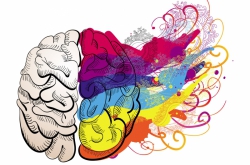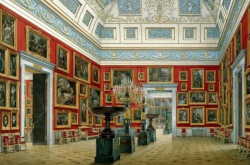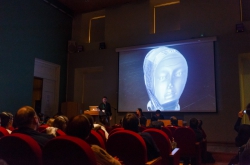Art&Science: Science.Art.Museum is a joint project by the State Hermitage Museum and ITMO University, aimed at exploring the modern ways of science and art’s interaction. The lectures for the projects are specialists from different countries. Atr&Science sessionstake place at the General Staff Building each third Saturday from November 2016 to June 2017. Everybody can visit these lectures for free, the only thing you need is to register online.
"At first sight, it seems that science and art are incompatible, but we have already integrated them," noted Mikhail Piotrovsky, head of the Hermitage at his opening speech. "Theselectures will be on technologies used in exact sciences that can assist to develop, analyze art objects, as well as solve problems of art."
Speaking of modern technologies, Mr. Piotrovsky mentioned optical devices that help verify the authenticity of art objects and 3D modelling techniques thanks to which one can create VR excursions.

The organizers did everything possible to make the lectures interactive and accessible — everybody can watch the previous session online. Furthermore, those who attend the lectures can ask their questions after the speakers' speeches.
Detecting forgeries by using spectroscopy
By Dr. Nicholas Eastaugh
The first lecturer — physicist and art historian at theArt, Analysis & ResearchCompany shared how experts of his lab define which art objects are not originals. They take photos of the masterpieces using high precision cameras that make images with different wave band characteristics. This helps discover "internals" of pictures such as what was on a picture before its author colored it, what material was under the canvas and what colors were used.
For instance, the researchers managed to analyze a portrait of Nina Kandinskaya painted by Vasilii Kandinsky. It was considered as lost for a long time. However, when researchers found it they doubted whether it was an original or not. Thanks to spectroscopy they detected that before to paint the portrait, the artist drew a sketch of a harbour with ships nearby and people walking on the quay. This sketch was definitely painted by Kandinsky, so the picture was recognized as original.
By using technologies based on x-ray and fluorescence, researchers can discover compositions of colors. Different paint pigments were used in various epochs. For instance, the original ultramarine was used till 1820-s, then artists started using cheaper substitutes.

How art and science interacted
By Claudia Lastra
The supervisor of the Arts Catalyst gallery presented a brief history of interaction between scientists and artists. The artists initiated this "collaboration" with researchers, representatives of industry and agriculture in the middle of the 18th century after the industrial revolution, when lots of factories appeared, which turned humans into an element of a giant industrial mechanism.
For many years, artists have been reflecting on how novelties affect the industry. They turn their thoughts into paintings, monuments and movies. Sometimes these ideas were extraordinary. For instance, some supposed that in the future, people would live under large glass domes and grow agricultural plants there. Some of these ideas came true — currently, scientists have to grow plants in special greenhouses located in cities due to lack of plentiful lands and problems with logistics.

As of now, art historians and artists work in cooperation with scientists. For instance, the "Arctic Perspective" initiative fused together specialists from different fields who visit subarctic regions so as to find new applications of modern technologies. There are also creative projects, for example, one of them was devoted to looking for new experiences with the assistance of artists — musicians and photographers stayed in cameras with unusual gravitation characteristics so as to find out new problems unobvious to others, and share them using art .





